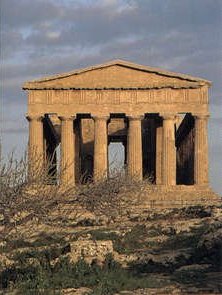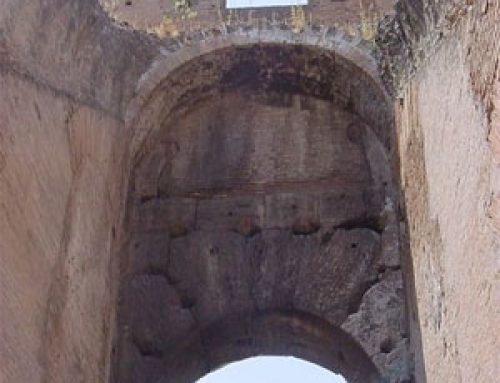
Doric temple at Agrigento, in Sicily. The plain square capitals with triglyphs and metopes over them show this is in the Doric order.
When did the Doric style get started?
The earliest Greek temples were built of wood, but as soon as the Greek began to build in stone, about 510 BC, they built in the Doric style.
Temples and rhythm
What’s a Greek temple?
Greek architecture
All our ancient Greece articles
What’s Doric architecture about?
Doric temples are simple and strong, not fancy like Ionic or Corinthian temples.
What’s the Ionic order?
Corinthian order

The elevation of a Doric temple showing the elements of the Doric order.
But more specifically?
In Doric temples, the columns have no base, but just sit right on the floor. At the top of the columns, there’s a capital made of a sort of small pillow in stone.
On top of the capital, there’s a square block of stone, under the architrave. Carved into the architrave, there are triglyphs and metopes.
What are triglyphs and metopes?
What’s an architrave?

Doric temple at Paestum, Italy. This one uses the Doric order too: square flat capitals, and no base to the columns.
Where did people build Doric temples?
In the Archaic period, practically every Greek city-state built its own Doric temples, not only in Greece but also in Greek settlements in southern Italy, Sicily, and Ionia (modern Turkey).
When did they stop building them?
But by around 450 BC, in the Classical period, Greek architects were beginning to build more delicate, fancier, lighter temples in the Ionic style.
More about the Ionic order
More about the Corinthian order
Bibliography and further reading about Greek architectural orders:
Ancient Greek Architects at Work, by J. J. Coulton (1982). An interesting look at how Greek architects worked.
Greek Architecture, by A. W. Lawrence, R. A. Tomlinson (5th edition 1996). Might be a bit out of date.




